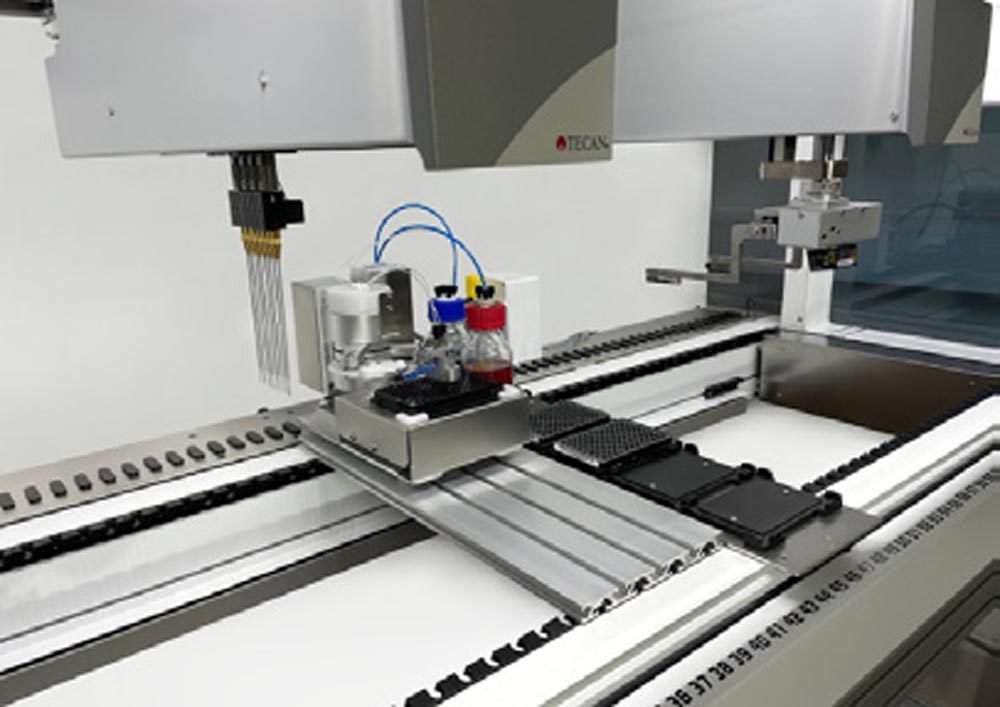Academic Accuracy
The Power of Miniature Motors in Lab Automation
It’s called the d2, a small, lightweight, nanoliter microplate dispenser—say that five times fast— used in lab automation to handle a variety of liquids. Created by UK Robotics, the liquid handler was launched in 2022 to shake up the possibilities of moving liquids around the lab on a budget.
The Bolton, U.K., company specializes in providing integrated systems for life science labs and counts both small biotech companies and big pharmaceuticals as essential to helping the tech firm grow.
Most life sciences experiments run in biotech and pharmaceutical companies start with a microplate, a flat plastic plate with small holes (wells) used as test tubes. A 120 mm x 80 mm microplate will have 1,536 wells; this is used to run thousands of experiments using the same volume.
Before lab automation, pipettes were used to move liquids by hand into large tubes; large tubes required large volumes of liquids, which meant the number of experiments was limited. It is essential that the dispensing and fluid volume control are extremely accurate before the experiment
Miniaturization has existed for a while but usually at a price. The UK Robotics liquid handler, the d2, is small; it is 25 percent smaller than other dispensers and has a lower price point. These factors are hugely important for start-ups or companies with limited lab space and budgets who still need to maintain accuracy.
The d2 uses two Maxon brushless EC 60 flat motors for the arms for the X and Y coordinates. The Z-axis uses the Maxon EC 45 flat with a mile encoder. The motors needed to provide consistency, accuracy, and a smooth torque curve. The sample is delivered through a hole of just 0.1 mm through a dispensing head valve made of polished sapphire and ruby, which is robust enough to allow for cleaning and sterilization without damage. The machine can accurately deliver 40 samples per second. Yes, that’s 40 samples per second!

“I know there are lots of cheaper motor manufacturers, but we needed the consistency that Maxon is known for. The accuracy of our product is paramount. When you calibrate for one motor you know it will be the right calibration for the others; you don't want to be calibrating each one every time,” said Mike Counsell, UK Robotics founder.
The multitude of possible combinations makes Maxon's EC 60 flat the ideal drive in a wide range of applications. Whether the focus is on high nominal torque, on high-dynamic positioning tasks with superb repetition accuracy, or on robustness and insensitivity against environmental conditions, the options are endless.
The MILE (Maxon’s Inductive Little Encoder) is used to make optimal use of the flat motor in high-precision applications and positioning tasks. This tiny inductive rotary encoder operating principle is based on the detection of high-frequency inductivity which generates eddy current in an electrically conducting target. The advantages of a high-frequency inductive method of measurement compared to traditional encoders include the potential for higher speeds, greater robustness, and an insensitivity against interference pulses (PWM controllers or motor magnets, for example).

For UK Robotics, Maxon motors allows the company to provide a plug and play lab automation system small enough to fit on a bench, under an extraction hood or right into an existing automation system. This wouldn’t be possible without the power behind some of the tiniest motors and encoders on the market.







